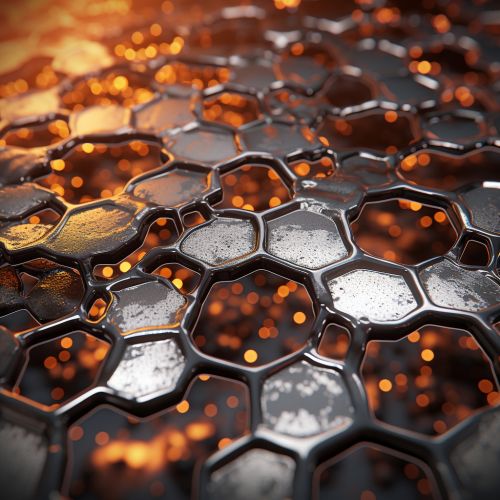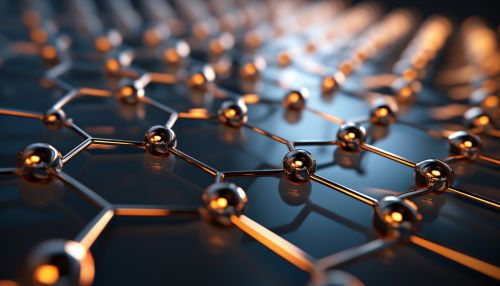Surface-enhanced Raman spectroscopy
Introduction
Surface-enhanced Raman spectroscopy (SERS) is a spectroscopic technique that enhances the inelastic scattering of photons by molecules adsorbed on rough metal surfaces or nanostructures. This technique is widely used in chemistry, physics, and materials science due to its high sensitivity and selectivity, which allows for the detection and identification of single molecules.


Principle
The enhancement effect in SERS is attributed to two main mechanisms: electromagnetic and chemical enhancement. The electromagnetic enhancement, which is the dominant mechanism, is due to the excitation of localized surface plasmons, which are collective oscillations of conduction electrons in metal nanoparticles. These oscillations result in an intense electromagnetic field near the nanoparticle surface, which can enhance the Raman scattering of adsorbed molecules by several orders of magnitude.
The chemical enhancement mechanism is less understood and is thought to involve charge transfer between the metal and the molecule, which can increase the polarizability of the molecule and hence its Raman scattering cross-section. The combined effect of these two mechanisms can result in an enhancement factor of up to 10^14, which makes SERS a powerful tool for trace analysis and single-molecule detection.
Experimental Setup
The experimental setup for SERS involves a laser source, a spectrometer, and a SERS substrate. The laser source is used to excite the sample, and the scattered light is collected and analyzed by the spectrometer. The SERS substrate, which is typically a rough metal surface or a nanostructured material, is where the sample molecules are adsorbed and their Raman scattering is enhanced.
The choice of laser wavelength is crucial in SERS experiments, as it should match the plasmon resonance of the SERS substrate for maximum enhancement. The laser power should also be carefully controlled to avoid damaging the sample or the substrate.
SERS Substrates
SERS substrates play a key role in the enhancement effect, and their design and fabrication is a major area of research in SERS. These substrates are typically made of noble metals such as silver, gold, and copper, which have strong plasmon resonances in the visible and near-infrared regions.
The substrates can be fabricated by various methods, including lithography, self-assembly, and chemical synthesis. The goal is to create a rough or nanostructured surface that can provide a high density of "hot spots", which are locations of intense electromagnetic field where the enhancement effect is maximized.
Applications
Due to its high sensitivity and selectivity, SERS has a wide range of applications in various fields. In chemistry, it is used for the detection and identification of trace amounts of chemicals and pollutants. In biology and medicine, it is used for the detection of biomolecules and disease markers. In materials science, it is used for the characterization of nanomaterials and thin films.
SERS is also a promising tool for single-molecule spectroscopy, which is a frontier area of research with potential applications in quantum information and nanotechnology.
